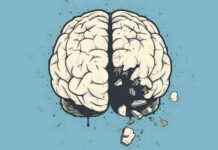In this age of technology and misinformation, it is crucial to equip students with the skills to differentiate between fact and fiction. A recent survey by the Center for Countering Digital Hate revealed that a significant percentage of teenagers are susceptible to harmful conspiracy theories, highlighting the importance of news literacy education.
Educators are encouraged to incorporate critical thinking skills into lessons on current events that are engaging and relevant to students. By prompting students to question the sources of information, evaluate credibility, and analyze evidence, teachers can help develop their ability to discern reliable information from misinformation.
Furthermore, it is essential to educate students on the various models of media, such as journalism of verification, assertion, affirmation, and interest-group journalism. Understanding these models can help students navigate the diverse landscape of news sources and identify reputable sources of information.
Integrating AI tools into the classroom can also be beneficial in helping students understand the capabilities and limitations of artificial intelligence. By teaching students how to use AI responsibly and critically evaluate its output, educators can prepare them for a future where AI plays an increasingly prominent role.
Additionally, teaching students how to fact-check information is a crucial skill in the digital age. Encouraging students to corroborate information from multiple credible sources and adopt a “trust, but verify” approach can empower them to navigate the vast amount of information available online.
By promoting news literacy, critical thinking, and AI competency, educators can equip students with the necessary skills to navigate the complex digital landscape and make informed decisions. It is essential to prepare students for the challenges posed by misinformation and AI to ensure they are well-prepared for the future.







